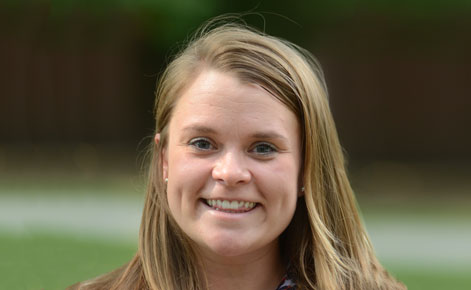 Two doctoral candidates are hoping to show how important sound is to community and literacy through their project, #hearmyhome.
Two doctoral candidates are hoping to show how important sound is to community and literacy through their project, #hearmyhome.
Cassie J. Brownell and Jon M. Wargo, both in the Curriculum, Instruction and Teacher Education program, will examine how K-12 youth and their teachers write about their community through and with “soundscapes” of the every day. Soundscapes can include anything from closing car doors, school bells ringing, trains coming by—anything that makes up and encompasses a community. Through these rhythmic resonances, Brownell and Wargo hope to look at acoustic territories in a networked collaborative; how writers can re-educate their senses toward sound and sound’s place in the classroom.

Cassie J. Brownell
“Taking sound as a starting point, #hearmyhome invites youth and their teachers to tune-in, quite literally, and write community and culture with and through sound,” Brownell said in the initial launch of the project in February.
Brownell and Wargo are relying on the online community for their research; they launched #hearmyhome online in February 2016, and invited prospective teachers, K-16 educators, youth and youth communities over 13 years of age to participate in weekly sonic events. Each week, they encourage the community through email, Twitter, Soundcloud and Instagram to share varying sounds that help them to “earwitness the everyday” through prompts such as “What are the sounds you hear as you walk out the door in the morning?” Users are to include the #hearmyhome hashtag, geotag their post and share online.
It is important to Brownell and Wargo to create a map of the soundscapes so that they can not only continue to research what is being shared, but also to keep the project up as a resource for teachers who wish to use sound in their classrooms.

Jon M. Wargo
“How do the sounds change and cause people to think differently in the United Kingdom versus Montana?” Wargo explained when talking about how far-reaching they hope their research will be. “These kind of broad-reaching soundscapes will help teachers in lesson planning with sound. For example, how does sound shift when writing a poem if you can’t use alphabetic print?”
The research is supported by the Cultural Heritage Informatics Graduate Fellowship and the National Council of Teachers of English (NCTE) Conference on English Education Research Initiative Grant, and continues through the end of April.
Follow the #hearmyhome project:
On Twitter: @hearmyhome2016
On Instagram: @hearmyhome
On Soundcloud: #hearmyhome
Visit their personal websites to learn more about Cassie Brownell and Jon Wargo.





